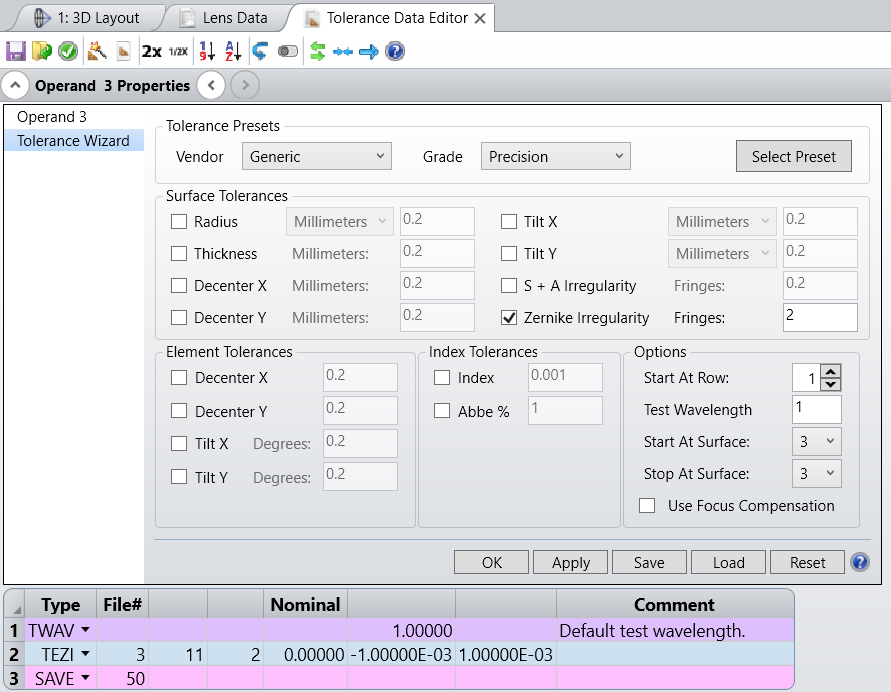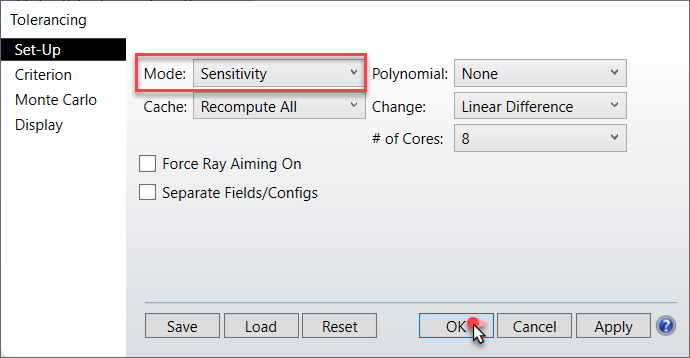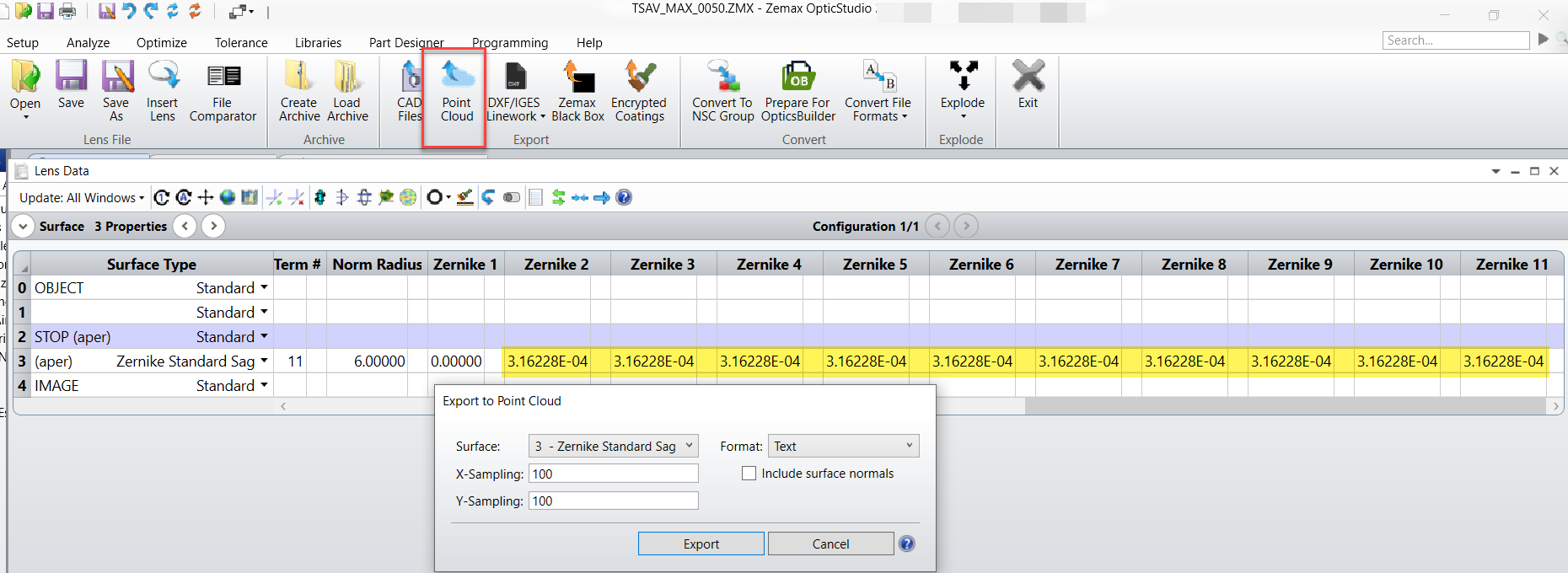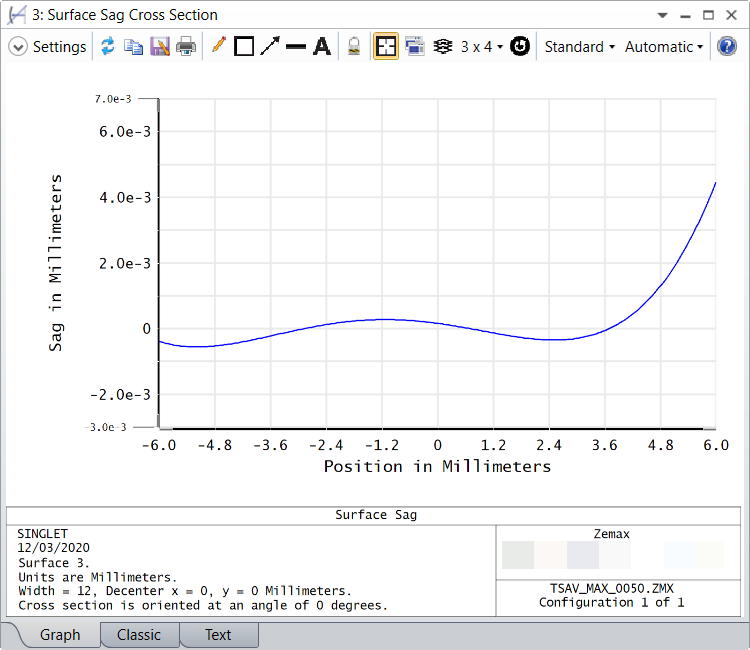Can you explain the following description in helpfile with a zemax file?
TEZI uses the Zernike Standard Sag surface (search the help files for “Zernike Standard Sag”) to model the irregularity on Standard and Even Aspheric surfaces, while Toroidal surfaces use the Zernike terms already supported by the Toroidal surface. When using TEZI, the max tolerance value is the exact RMS error of the surface in lens units. The min tolerance value is automatically set to the negative of the max value; this is done to yield both positive and negative coefficients for the Zernike terms. The resulting RMS is of course always a positive number whose magnitude is equal to the max tolerance value.
Tolerancing- understanding of when using TEZI, the max tolerance value is RMS error of surface
We will take advantage of the useful tolerancing operand SAVE: save sensitivity analysis lenses. Before go through the following steps, you may search SAVE from helpfile or click here to get more information about the tolerancing operand.
The file being used locate in your sample folder: C:\Users\J...\Documents\Zemax\Samples\Short course\Optical System Design Using OpticStudio\SC_Tol_singlet.zmx
- Add the following operands in Tolerancing data editor. This will set RMS error of surface3(a planar surface) as 0.001mm (in lens units), which is the value being set for max tolerance cell in TDE. Here the testing wavelength being set as 1 micron is because I added operands by using tolerance wizard with the setting of Zernike Irregularity as 2 fringes, it is for the convenience to show how fringes of Zerinike Irregularity being calculated as Max/Min tolerance value. We consider that fringes are measured in a double pass Newton's rings type test, so 2 fringes corresponding to the distance of 1 wavelength.

2. Run tolerancing tool in sensitivity mode. When finished, the two sensitivity lenses files are saved in the same folder with suffix 0050 (File# we put in SAVE operand).

3. Open one of the file, for example: TSAV_MAX_0050.ZMX, use Point Cloud(available since OS20.1 for subscription only) to export sag data for verification. The RMS surface error is 0.001mm.


Note the coefficients value for Zernike terms, for the sensitivity analysis, all coefficients are set to the same value. As highlighted in above screenshot.
For the Monte Carlo analysis,each polynomial term is assigned a coefficient randomly chosen between -1.0 and 1.0, and the resulting coefficients are then normalized to yield the exact RMS tolerance.

3. Open one of the file, for example: TSAV_MAX_0050.ZMX, use Point Cloud(available since OS20.1 for subscription only) to export sag data for verification. The RMS surface error is 0.001mm.


Note the coefficients value for Zernike terms, for the sensitivity analysis, all coefficients are set to the same value. As highlighted in above screenshot.
For the Monte Carlo analysis,each polynomial term is assigned a coefficient randomly chosen between -1.0 and 1.0, and the resulting coefficients are then normalized to yield the exact RMS tolerance.
Reply
Enter your username or e-mail address. We'll send you an e-mail with instructions to reset your password.



